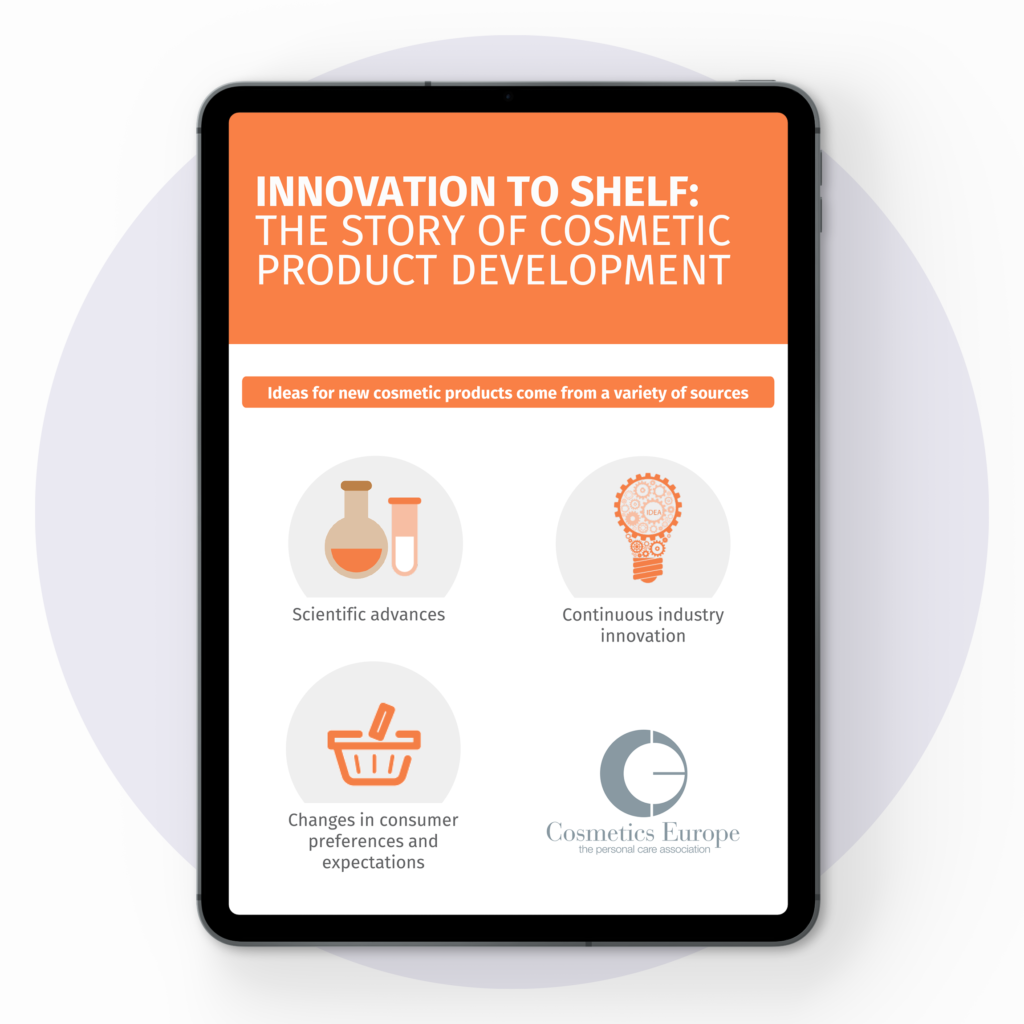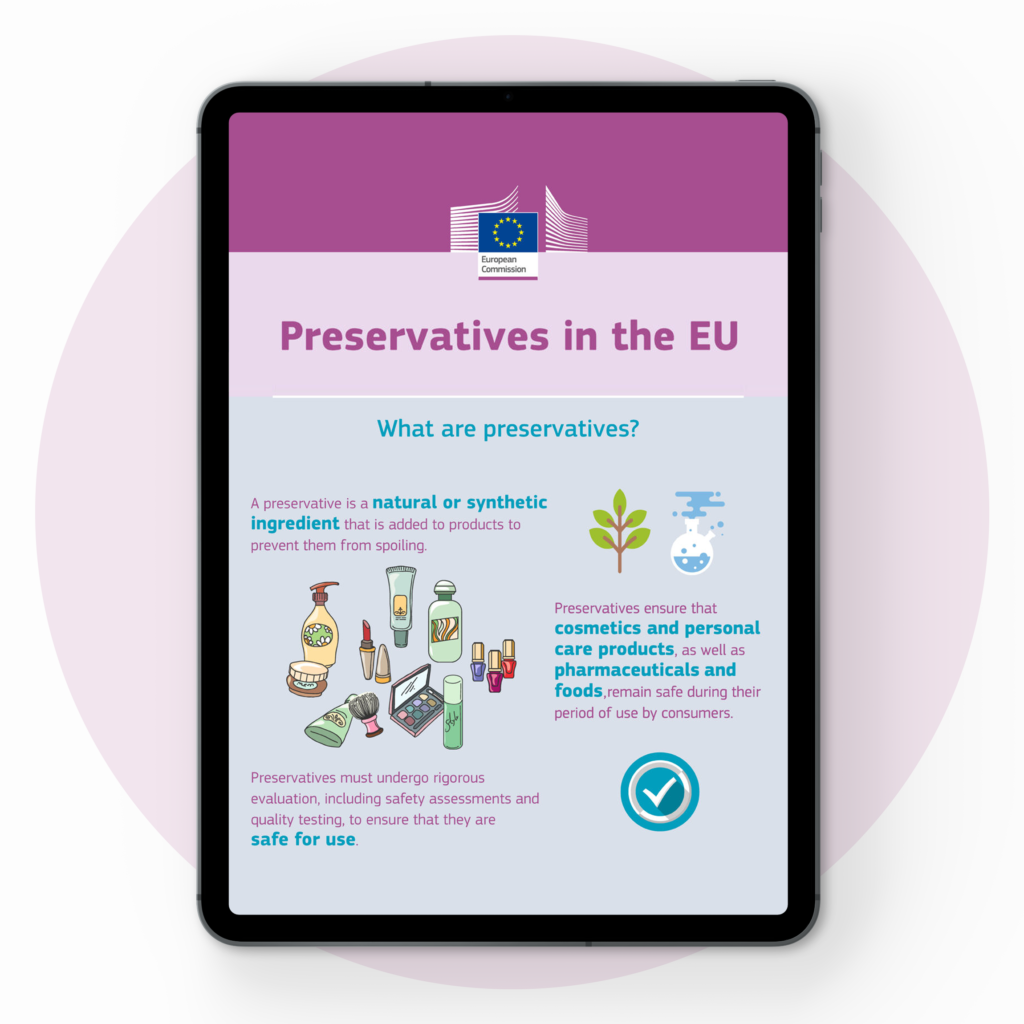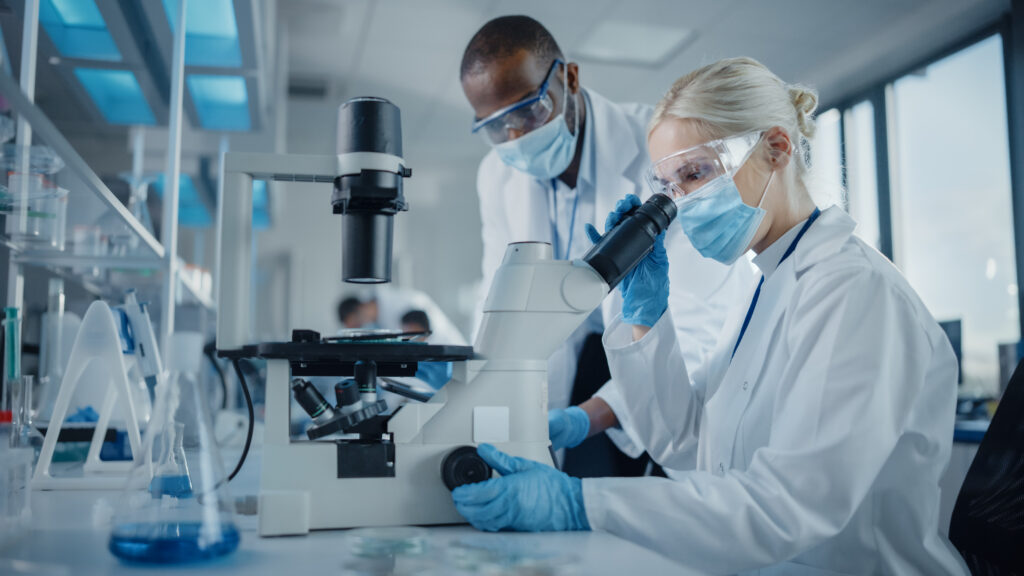How we make your products
Research and development (R&D)
Innovation is at the core of what the cosmetics industry does. We carry out research and development to understand every aspect of our customers’ needs and develop the products they want. R&D looks at factors such as:
- consumer behaviour and beauty aspirations
- the biology of skin and hair
- developing new and innovative technologies
- sustainable development
Carrying out research means we can select and develop the ingredients that are most respectful of human health and the environment. It enables us to create or reformulate products that reflect the ever-changing expectations of our customers.
Innovation in our industry is a long-term process. It can take over five years of research and formulation to create a new product. Innovation is an ongoing process, and every year 25% of cosmetic products are either improved or completely new. As an innovator, the cosmetics industry has thousands of EU patents associated with its products. In 2009 10% of all patents in the EU were for cosmetics and personal care products.
Check out our “Innovation to Shelf” infographics.
Choosing ingredients
The ingredients that can be used in cosmetics and personal care products are defined by the European Cosmetic Products Regulation (CPR). This includes lists of approved ingredients such as colouring agents, preservatives and UV filters, as well as substances that can only be used in specified circumstances.
Assessing for safety
Consumer safety is the number one priority underpinning the manufacture and sale of cosmetics in Europe. Responsibility for product safety lies first and foremost with manufacturers (or importers in the case of imported products).
Before placing a product on the market, companies must meet a range of obligations under the CPR. These include:
- carrying out a safety assessment, the results of which must be made accessible for inspection
- providing comprehensive technical product information
- complying with ingredient and labelling rules
- following recognised Good Manufacturing Practice (GMP)
- providing evidence to support claims about the product’s performance
Safety assessments take into account a product’s ingredients, their chemical structure and the level of exposure. The assessment must pay particular attention to where the product will be applied (for instance on the eyes, mouth or scalp) and which population group is expected to use it.
Cosmetic products for children under three have to undergo an even more rigorous safety assessment. This takes additional factors into account, such as a young child’s higher skin surface area to body weight ratio.
The person who carries out the safety assessment must have appropriate qualifications and experience. They also need to hold a recognised diploma in pharmacy, toxicology, dermatology, medicine or a similar discipline.

Preserving cosmetics and personal care products
Cosmetic products may contain preservatives, which are added to prolong their life and keep them effective. Preservatives ensure that products are safe to use during their intended lifespan. They provide protection from contamination by microorganisms, which are naturally present in the air, water and on our skin. Cosmetic products that become contaminated with bacteria and yeasts can cause irritations or infections. Without preservatives, many cosmetics would have to be kept cool, and would spoil in the same way as perishable food.
Most cosmetics, including those made from natural ingredients such as jojoba, fruit pulp and plant extracts, need preservatives. They typically have an open jar symbol on the label showing how many months they will last once they are open. The majority will remain stable and free from contamination for many years, as long as they are unopened. Some products, like perfumes, deodorants and hair sprays with high alcohol content, don’t need preservatives. For others, preservatives play an important and beneficial role.
There are strict rules about which preservatives can be added to cosmetics, with an approved list included in the Cosmetic Products Regulation. These have undergone stringent scientific tests before being approved for use, including a review by the SCCS.
Allergies to preservatives are rare, but a very small number of people can have an allergic reaction to certain ones. The ingredients in cosmetic products are labelled in accordance with EU legislation, and the same labelling system is used throughout the EU and in many countries around the world. This means people with a known allergy can check the ingredients list to ensure the product does not contain anything they are allergic to.
The European Commission has produced an infographic explaining the importance of preservatives for cosmetic products.
To check how much you know about cosmetic products presentation, take the Cosmetics Europe quiz.

Alternatives to Animal Testing (AAT)
The cosmetics and personal care industry has been at the forefront of developing alternatives to animal testing for safety assessments for decades. Even before animal testing was prohibited in the EU, cosmetics companies were already taking significant steps to eliminate it.
The status of animal testing in the EU is as follows:
- Animal testing of cosmetic products is banned
- Animal testing of cosmetic ingredients is banned
- Selling cosmetic products tested on animals is banned
- Selling cosmetic products containing ingredients tested on animals for the purpose of complying with the Cosmetic Products Regulation is banned
The industry expert scientists have been dedicated to supporting the development, validation and approval of alternative testing methods for more than 30 years. Science, research and innovation have been key to maintaining our leading role in this area. We have shown strong, sustained commitment—and made significant investment—to build on scientific progress, develop new approaches and drive innovative paradigm shifts in safety testing and assessment that meet regulatory needs. We are fully committed to continuing our work in this field.

Manufacturing according to Good Manufacturing Practice (GMP)
The Cosmetic Products Regulation stipulates that all cosmetic products must be manufactured in accordance with Good Manufacturing Practice (GMP), i.e. the relevant harmonised standards, the references of which have been published in the Official Journal of the European Union.
GMP is key to ensuring that the quality of products is both high and reproducible. It also makes sure that products are prepared in a clean environment without the risk of contamination.
Placing a product on the market
Before being placed on the European market, all cosmetic products must be listed on a centralised database. This is called the Cosmetic Products Notification Portal (CPNP) and is managed by the European Commission.
A range of different organisations can access the CPNP:
- Competent authorities, who use the information for market surveillance, market analysis, evaluation and providing consumer information
- Poison centres, who use the data for medical treatment
- Cosmetic products “Responsible Persons” e.g. manufacturers
- Distributors of cosmetic products